Jewish philanthropist Julius Rosenwald built almost 5000 schools for African-Americans and helped educate hundreds of thousands of students.
-
Winter 2020
Volume64Issue1
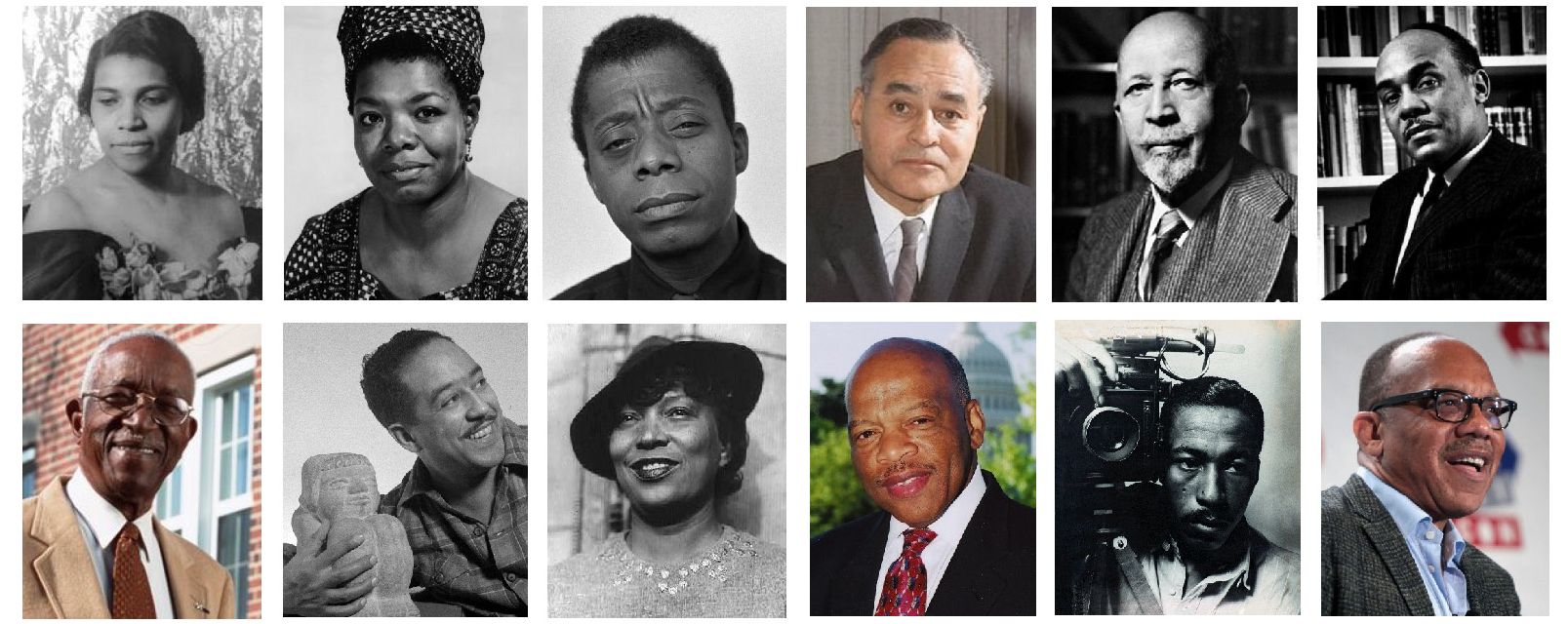
Booker T. Washington faced a challenge. As president of the Tuskegee Institute and the premier black educator of his day, he had done his best to combat the systemic racism of the Jim Crow South. But there was a constant undercurrent of racial violence, as each year across the region, hundreds of African Americans were lynched or terrorized by the Klu Klux Klan and white mobs. Even as Washington searched for students the Institute, he had trouble finding candidates with the skills and basic education that would qualify them. Elementary education for African-Americans was virtually non-existent in the early 20th Century.
In this climate Washington met Julius Rosenwald, an encounter which would ultimately prove to be one of the most important in the history of education in the U.S. Neither Washington nor Rosenwald could have predicted the profound influence they would have on each other.
Outwardly, Rosenwald and Washington appeared to have nothing in common. Washington was a former slave from the South who never knew his white father, Rosenwald a northerner and child of Jewish immigrants who became incredibly wealthy as president of Sears Roebuck. But they were united in a shared understanding that education was the means to advancement for the underprivileged, and a commitment to making sure blacks in America had a chance to go to school.
Rosenwald was also driven by his personal passion for philanthropy, and through his work he was able to bring to the forefront some of the greatest scholars in American history.
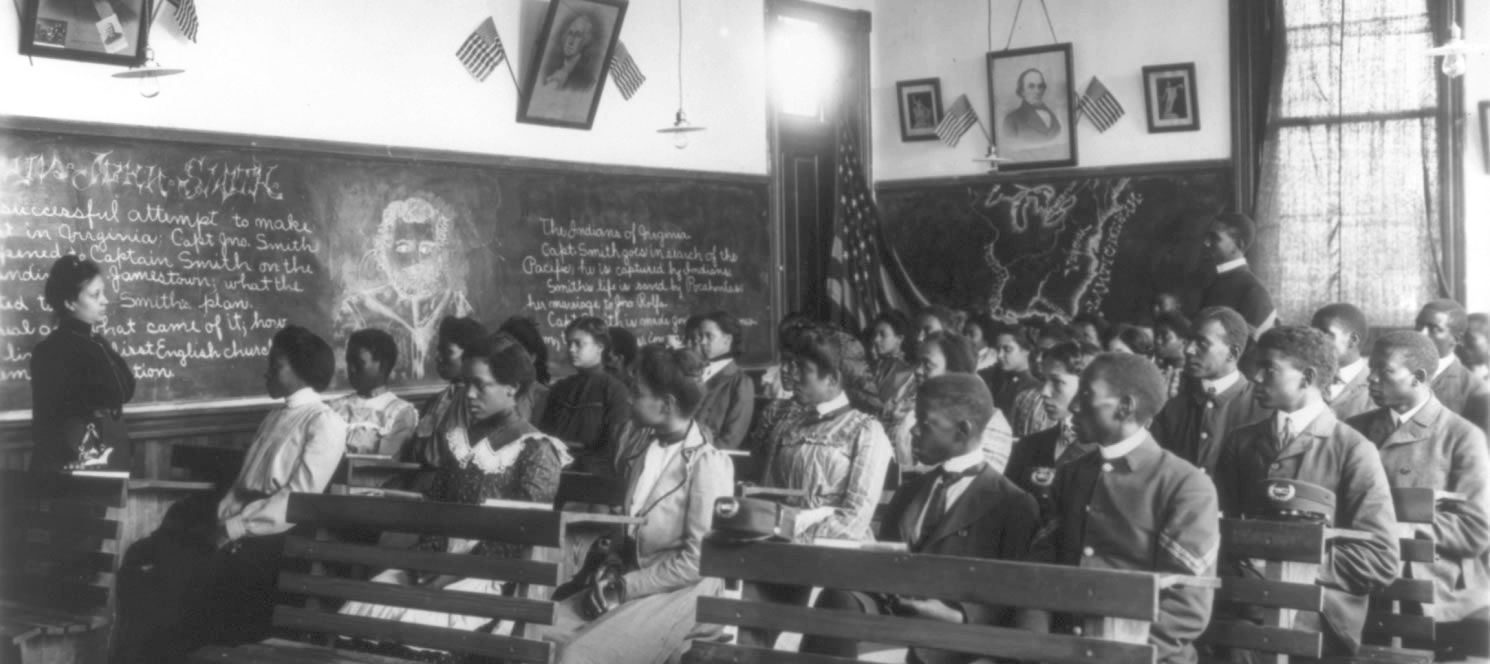
Washington was born into slavery in Virginia in 1856. After the Civil War and emancipation, his stepfather, another former slave, moved the family to West Virginia and forced Washington to work at hard, manual labor despite his desperation to go to school. In 1872, while working in a coal mine, Washington overheard some of the miners talking about the Hampton Institute, a college for African-Americans in Virginia. Astonished that such a school existed, Washington resolved that he would attend and trudged most of the 500-mile journey to Hampton by foot. He arrived with only fifty cents in his pocket and worked as a janitor to pay his tuition.
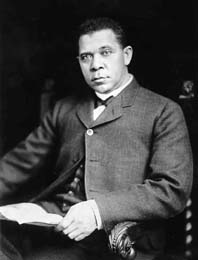
Samuel Armstrong, president of Hampton, saw qualities of leadership and determination in young Washington and the two became close. Armstrong recommended Washington to be the head of Tuskegee, despite being asked for a white man by the Alabama businessmen who were starting up the new school. On arriving, Washington found a few broken down buildings, hardly suitable for a new university. Using a loan from Hampton's treasurer, Washington bought an abandoned plantation and, with his students, toiled by hand to build it into a premier institution for African-American education. As a primarily “normal” college, focused on agricultural, domestic, and industrial training, the school also offered academic classes.
Washington soon became renowned as a fiery speaker and advocate for blacks, becoming the first African-American to dine at the White House.
Meanwhile, Julius Rosenwald was beginning his own work on behalf of African-Americans. Born in Springfield, Illinois in 1862 to German-Jewish immigrants, Rosenwald had a middle-class upbringing. Rosenwald’s parents instilled in their children the Jewish values of tzedakah (charity) and tikkun olam (to repair the world.) Both traditions were important to Jews in America, particularly immigrants, many of whom were without means and who relied on Jews who had already established themselves in the U.S. for assistance.
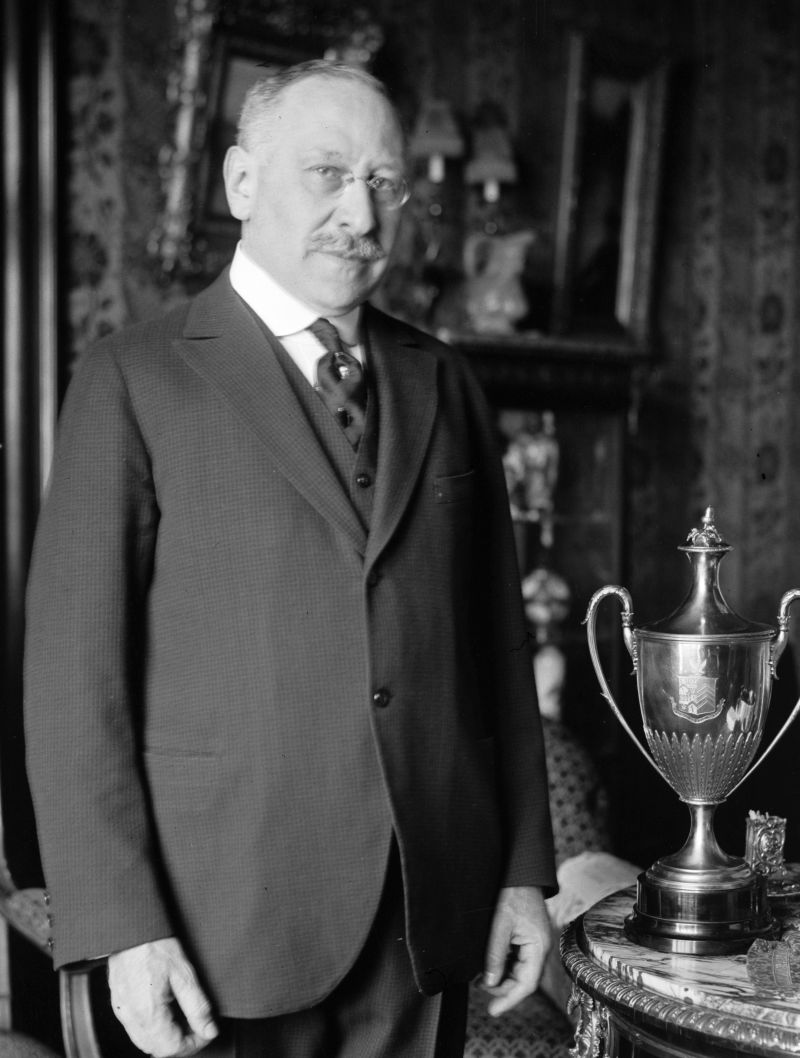
Despite what would later become a lifelong dedication to education for others, Rosenwald never finished high school, dropping out to move to New York and work in the family garment business. He eventually left New York for Chicago to found his own company, and in 1890, Rosenwald married Gussie Nusbaum. At around this time he wrote to her, "The aim of my life is to have an income $15,000 a year - $5,000 to be used for my personal expenses, $5,000 to be laid aside, and $5,000 to go to charity." His humble aspirations still firmly included his commitment to tzedakah. He did not imagine that in just a few years, he would far exceed this dream.
In 1896, Rosenwald was approached to become a partner at Sears Roebuck and Company, which was failing at the time and nearly bankrupt. Despite his lack of education, he proved an enormously talented businessman, dramatically improving company efficiencies and increasing revenues. He took the company public, and transformed it into one of the most profitable retailers in American history. In 1908, Rosenwald replaced Richard Sears as president of the company, and continued to grow profits. He became one of the richest men in America.
Rosenwald and his family joined a Jewish synagogue in Chicago led by Rabbi Emil Hirsch, a legendary progressive, advocate for social justice, and leader of the Reform Movement. Hirsch was a co-founder of the NAACP and preached the obligation of the wealthy to help those less fortunate. “Charity is not a voluntary concession on the part of the well-situated,” he said. “It is a right to which the less fortunate are entitled by justice."
Hirsch’s impact on Rosenwald was profound: his teachings and progressive philosophy would influence Rosenwald for the rest of his life. He attended Hirsch’s sermons and “sat at his feet” for over 40 years. Rosenwald came to see tzedakah was a moral obligation, the essence of being a Jew, and the driving force of his life. It was also reflected in his humility: Rosenwald often commented that being rich did not necessarily impart intelligence, and that his becoming so wealthy was primarily a result of luck.
Rosenwald’s desire to apply his commitment to tzedakah and tikkun olam to the African-American community began when he read Booker T. Washington’s Up From Slavery. His upbringing and struggles to succeed had a deep effect on Rosenwald’s view of African-Americans. He saw in the plight of blacks in the South a parallel to that of Jews in Europe, and felt a strong kinship with the African-American community. At the time, young men coming to northern cities to look for work often used YMCAs as boarding houses. However, because Chicago’s YMCAs were only for whites, young African-Americans had no place to stay. Nor could they take advantage of the free classes and recreational facilities that the YMCAs provided.
In 1910, Rosenwald agreed to donate half the cost of a new black YMCA in Chicago on the condition that the rest of the funding be provided by the black community, ensuring buy-in and commitment. The fundraiser was hugely successful, and Rosenwald would go on to build more YMCAs for African-American communities around the country, as well as becoming a donor to the NAACP and Urban League. Rosenwald resolved that helping African-Americans to achieve their “high place in the scale of civilization” was going to be his life work, stating that the African-American “surely deserves a fairer chance to a better environment, and I am going to do all I can to see that he gets it."
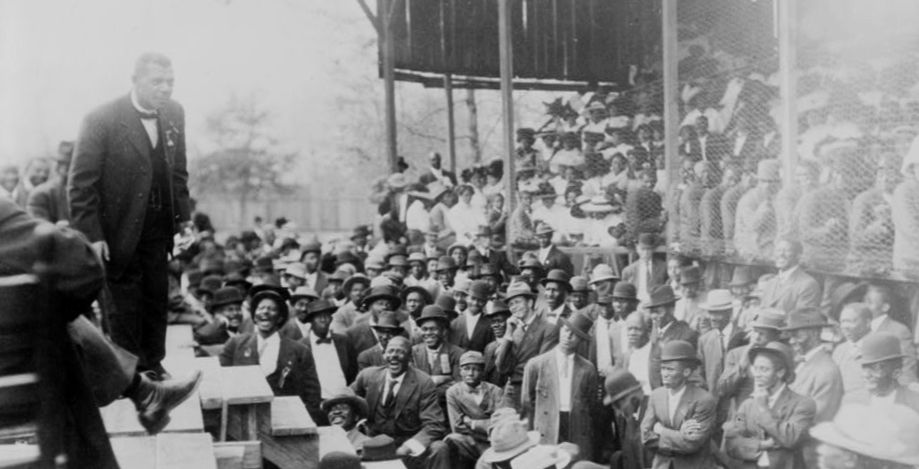
In 1911, Booker T. Washington came to Chicago in search of a white philanthropist for the Tuskegee Board of Trustees. A mutual fried, Wilber Messer suggested that they meet and also encouraged Rosenwald to host a luncheon for Washington in Chicago. Rosenwald enthusiastically agreed. Washington offered him a place on the board of Tuskegee, and Rosenwald and his family visited the Institute in October of 1911, travelling through the South in a private rail car.
Rosenwald was deeply impressed with the facilities and students of Tuskegee, saying, "I was astonished at the progressiveness in the school. I don't believe there is a white industrial school in America or anywhere that compares to Mr. Washington's Tuskegee." He agreed to join Tuskegee’s board, writing Washington that he considered it a “rare privilege” to be connected with the institute and its “splendid staff.”
After his visit to Tuskegee, Rosenwald became much more aware of the situation in the South, where Jim Crow laws dominated the lives of African-Americans. Rosenwald was profoundly saddened by the communities he saw, where blacks lived in a constant state of terror, poverty and desperation.
Governments in the South largely refused to provide education to African-American children. South Carolina, for example, spent $53 per year on each white child, but only $5 per year on each black child. Where schools did exist, they were often dilapidated and lacking in books or supplies. The teachers were untrained and sometimes illiterate.
Washington, in Up From Slavery, commented that he “found that there was no provision made in the house used for school purposes for heating the building during the winter…with few exceptions,” and that the teachers in these country schools…(were) miserably poor in preparation for their work, and poor in moral character. The schools were in session from 3 – 5 months.” These facts were not lost on Rosenwald, and were further emphasized by the similarities he saw to the Jews in Europe, stirring his desire to help and meet the obligations of tikkun olam.
In 1912, Rosenwald made a $25,000 donation to the institute for teacher training. Washington, the clever “Wizard of Tuskegee,” suggested that the funds instead be used to build six schools in the counties around Tuskegee, hoping to make a start at changing the abysmal education black children were receiving. Rosenwald agreed to pay $28,000, about half the cost of the schools construction. Rosenwald and Washington agreed that the community who would benefit from the school should raise the remaining funds. Washington also suggested that the schools be built by the local community, using local materials, to maximize buy-in, the pride of ownership, and the community’s sense of self-determination. Despite initially wanting Sears to provide the materials, Rosenwald agreed, because of his respect for Washington and his faith in his judgment.
Built within two years, the first six schools were highly successful; Rosenwald and Washington decided to extend the program to allow for any African-American community in the South to apply for a school. Tuskegee administered the program, which was critical in the early stages. Blacks in the South were suspicious of white northerners, but they knew and trusted Washington. African-American communities all over the South began to raise funds in order to apply for a school, as word of the Rosenwald School Building Program spread. They used every means possible - from donating the land to fundraisers to providing labor as in-kind donations - to leverage Rosenwald's grant and build schools for their children.
For many in the South, the schools represented not just education, but a center for the community and a doorway to equality for their children. Rosenwald insisted that the schools be in-session nine months a-year and that the state provide one-third of the funding and maintain the school after it was built. In doing so, Rosenwald was able to apply pressure to local governments to ensure that the southern states, which had previously not fulfilled their obligation to African-American education, begin to engage with and support education for Black communities.
In addition to constructing schools, the Rosenwald program also built libraries for communities across the South, provided teacher training and materials for the classroom, and constructed housing for teachers to ensure that they were active members of the communities they served.
After Washington’s death in 1915, Tuskegee leadership fell into some disarray, and they were unable to maintain the program. Rosenwald had established the Rosenwald Fund in 1918, “For the Betterment of Mankind,” and in 1919, the Rosenwald Fund took control of the schools' construction. The program continued to proliferate, as more and more communities sought to provide their children with education, with 4,977 Rosenwald Schools being built across 877 counties in 15 southern states, educating 650,000 children, one-third of all African-American young people in the United States at the time.
Rosenwald Schools operated until the landmark Brown v. Board of Education decision (1954) abolishing segregation. Some stayed open for years as states fought the ruling. Many school houses are still standing, used as community centers or declared National Landmarks. Rosenwald School alumni include such accomplished and distinguished Americans as Congressman John Lewis, author Maya Angelou, Pulitzer Prize-winning journalist Eugene Robinson, and Tony Award-winning director George C. Wolfe.
Rosenwald realized that primary and high school education would not be enough to help the African-American community to thrive in America. He had given significant sums to Historically Black Colleges and Universities, but he understood that even this was not enough. Working with Edwin Embree, an outspoken advocate for African-Americans and the man Rosenwald hand-picked to be the director of the Rosenwald Fund, Rosenwald created a specialized fellowship program designed to support African-Americans and race relations in America. The Rosenwald Fund gave grants to promising young African-American scholars and artists, as well as some Whites who were furthering the cause of social justice and race relations in America. The program would give grants to not just those in the South, but also African-Americans in the North.
Nearly a thousand grants were given to African-Americans to support research, art, and to help students complete their education. This allowed many who would otherwise have never been recognized as great scholars or artists to achieve success and renown. The Fund often stepped in when a scholar was out of money to complete their education, as they did for Charles Drew when he needed to complete medical school. Drew’s innovative blood-preservation technique saved countless lives during World War II. The Fund gave money to musicians who were being discriminated against, as they did for Marian Anderson, so she could go to Paris to study singing. Anderson became one of the most famous opera singers in America, with a voice described as “once in a century” by Toscanini.
The Fund supported the first two African-Americans to get PhDs from Columbia, Ken and Mamie Clark; painter Jacob Lawrence, whose Migration Series remains an emotionally-resonant and powerful graphic depiction of the experiences of Blacks during Jim Crow, Reconstruction, and the Great Migration; poet and writer Langston Hughes, deeply influential in the Harlem Renaissance; diplomat Ralph Bunche, the first African-American to win the Nobel Peace Prize; and pioneering doctor W.E.B. DuBois, renowned African-American scholar and activist - to name just a handful.
Both the Rosenwald Schools and Rosenwald Fellowship programs, in addition to providing education and support for the African-American community, produced some of the greatest black intellectuals and artists in American history, many of whom had far-reaching cultural impact, a fact which challenged the rationality of racism. Additionally, many graduates and fellows were directly involved with the Civil Rights movement, and with the legal cases that ended segregation - at least seven Rosenwald Fellows contributed directly to the success of Brown v. Board of Education. A full gallery of fellows and students may be found at the bottom of this page, with descriptions of their work and influence.
When considering American exceptionalism, especially in the field of philanthropy, Rosenwald’s name should be top-of-mind. Rosenwald, though, created no endowment. He insisted that all the money in the Rosenwald Fund be spent within 25 years of his death. He believed that money should be used to have as much impact as possible on the needs at the time, and that “future generations can be relied upon” to address future needs. His own commitment to tzedakah, and his own goodness, provided him with profound faith in and optimism about the future. Because of this approach to spending all the funds, and his desire to help as many people as he could as fast as possible, few people know that Rosenwald donated the equivalent of $500 million in today’s dollars to support the African-American community. They also don’t know that he gave an equal amount to other causes, including the construction of the Museum of Science and Industry in Chicago. This should be rectified - an individual as exceptional in his generosity, compassion, and belief in the power of education should be known - to all Americans.

